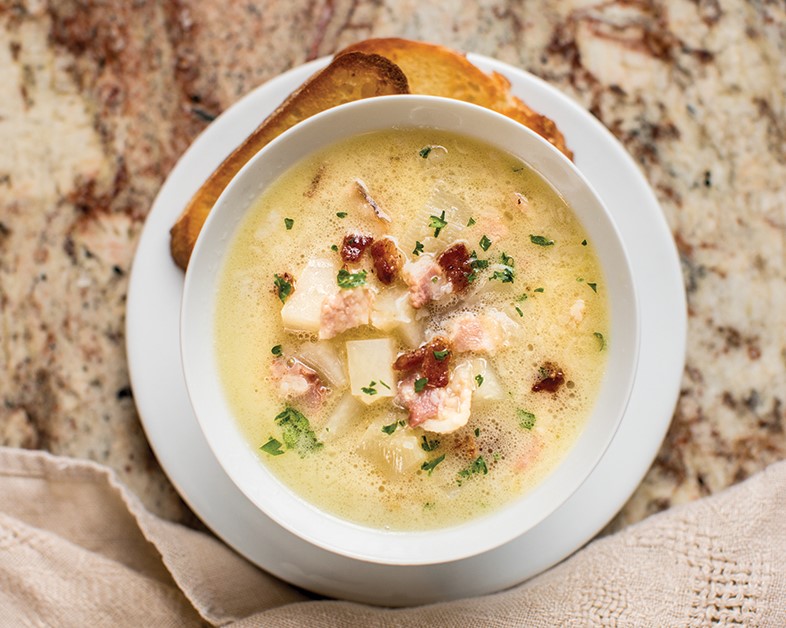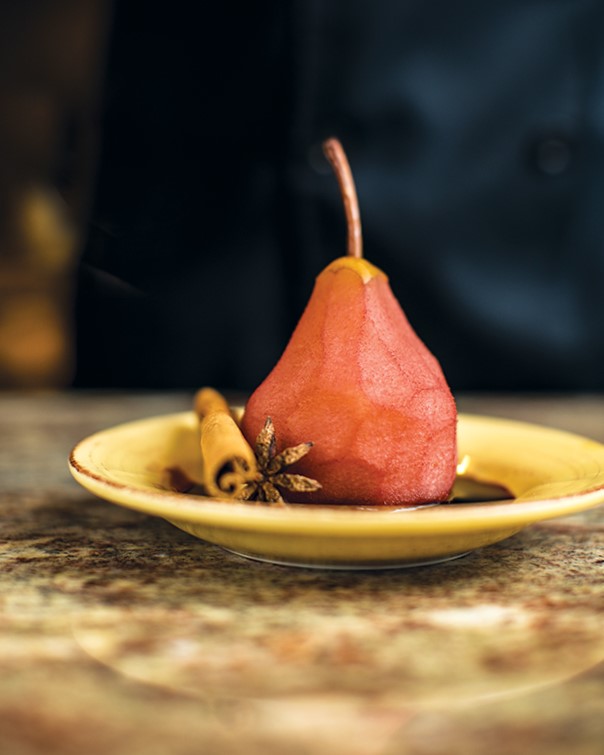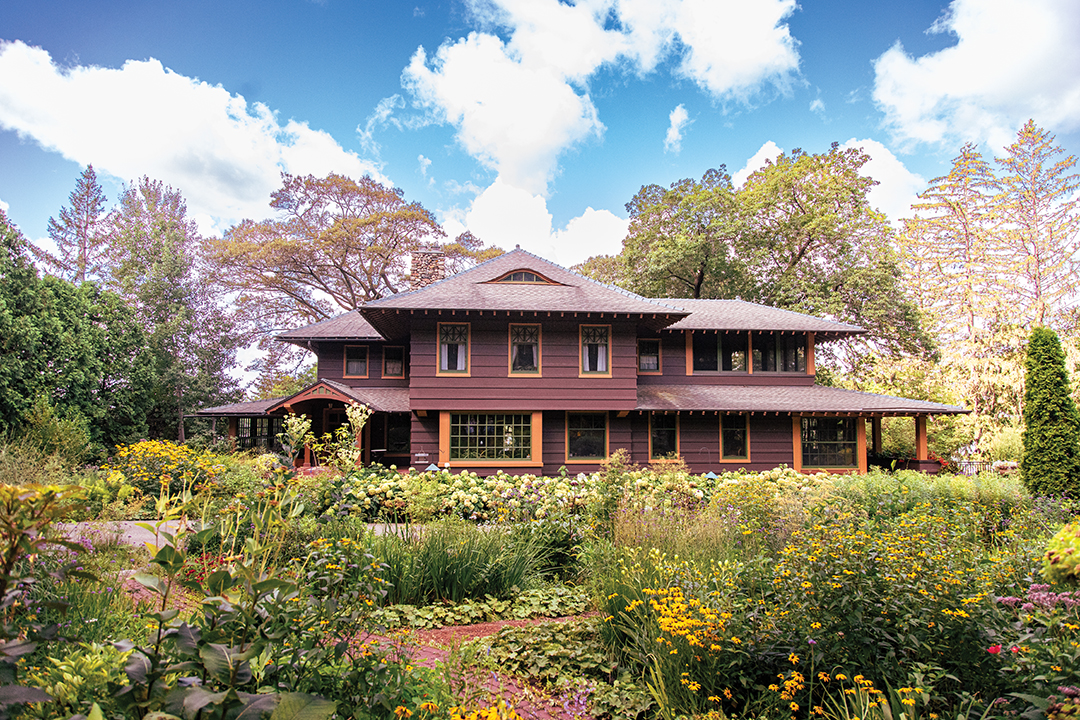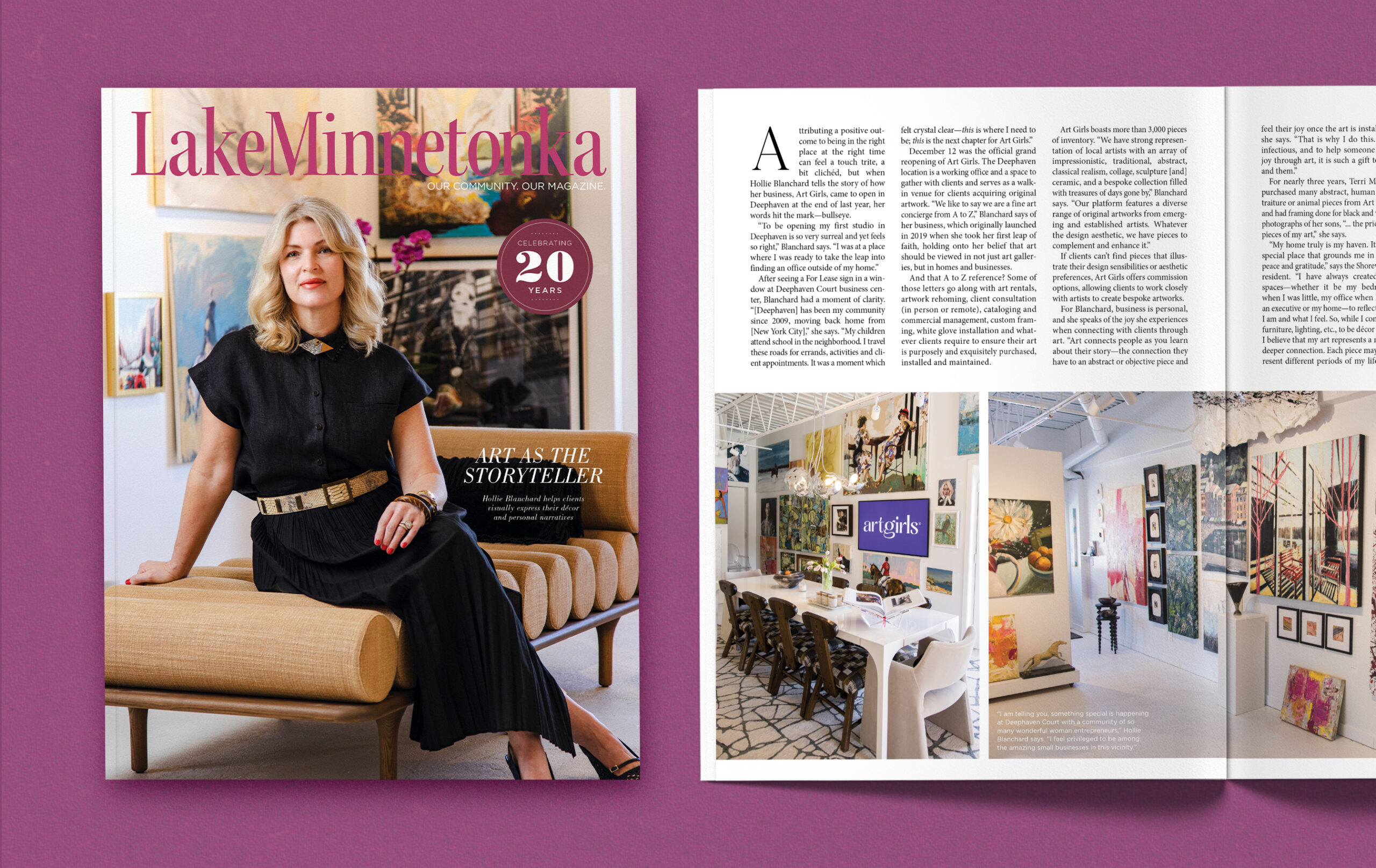
Photos: Chris Emeott
Local teen lands a spot in the blogosphere.
Excelsior aspiring chef Spencer Olson may only be 18 years old, but he’s already packed in three years of culinary training.
“The first job I was able to get was a senior living place,” Olson says, where he received plenty of work experience. While there may be some stigma around the menu options at some senior living communities, Olson says there are many instances where well-trained, professional chefs spend their days working at such locations, as they provide job security and stable hours.
Case in point: It was at the senior living center where he worked that Olson met his first mentor, a pastry chef, who now works at the Grocer’s Table in Wayzata. From there, Olson embarked on part-time work that took him around the area. “I worked at a restaurant in Chanhassen as a line cook,” Olson says. “That [allowed] me to get the experience of working in a professional restaurant, working fast, dancing around a kitchen.” He served as a bread baker at Red Bench Bakery’s Chaska location. “That really got me interested in the finer details of cooking,” he says. “I also work at [Olive’s Fresh Pizza Bar in Excelsior], so over a couple years here, I’ve had multiple restaurant jobs. It’s been really exciting.”
But in his downtime between full-time school (At the time the article was written, he was a senior in high school.) and sometimes a 50-hour work week, Olson embarked on a new venture—The Wooden Spoon blog. “It’ll have more of my recipes as it grows, but it’ll have industry secrets and articles about gadgets that many foodie blogs don’t always offer,” he says.
Olson’s inspiration for his culinary blog was borne out of a private chef business he had planned before the pandemic struck. “It was set and ready to go in a matter of weeks,” he says. “But I noticed that there’s not a lot of people who know the details of the culinary industry and the background behind it.”
Whereas many blogs focus on recipes, Olson wanted to give his readers a peek into the restaurant industry, bringing tips and tricks from restaurant kitchens to the fore. “My goal is to bridge the gap between methods used in the restaurant and methods you can use in your kitchen to become a better cook or chef or baker,” he says.
Olson also hopes to start building a community around food and resources for improving followers’ kitchen know-how. “I’ve had the privilege to ask any chef around me that I work with—if a recipe doesn’t turn out, ‘What went wrong here? What can I change?’ Not everyone has that [opportunity].” To that end, Olson included a “groups” feature on The Wooden Spoon blog. The groups include a general discussion board, a crowd-sourced recipe book and a recipe troubleshooting resource, where Olson will recreate a recipe or culinary technique that went poorly for a reader, fine-tune the details, and recommend improvements.
“I hope to grow my blog into something more than a blog [that is] centered on a community of like-minded foodies,” Olson says, adding, he wants The Wooden Spoon to be “a place where everyone can contribute and bounce ideas off of [one another]. Somewhere people can share their own recipes and use my trusted recipes and learn a thing or two on how to become better chefs.”
Olson signs off on his blog posts with the moniker, The Flying Chef. “When I was 14, I [attended] a flying camp. I started out wanting to fly and finding it really fascinating. My neighbor was like, ‘You know what? I think your nickname should be The Flying Chef’ …” says Olson, who now has his private pilot’s license.
Olson hopes to combine his interests, melding a career as a commercial pilot with the opportunity to cook for private clients around the world. His immediate plans include attending the University of North Dakota this fall to study commercial aviation.
Humble Potato and Leek Soup (Soupe à La Bonne Femme)
“It’s a light, humble French country soup [that] ties in with Escoffier, one of my inspirations for cooking,” Olson says. (Auguste Escoffier was a well-known French chef, active from the mid-19th to early 20th centuries.)

Court-Bouillon
- 750 ml white wine
- 3 1/4 cup water
- 1 white onion, diced
- 1 celery rib, diced
- 20 (~25 g) parsley stalks
- 2 sprigs thyme
- 1 bay leaf
- 3/4 tsp. (10 g) salt
- 1 ½ tsp. (5 g) whole peppercorns
Soup
- 1 3/4 cup (250 g) white leek, shredded
- 5 1/2 Tbsp. (75 g) butter
- court bouillon plus additional water to equal 7 1/2 cups
- 3 1/4 cup (500 g) russet potatoes, peeled and diced
- 4 (160 g) strips of thick bacon, diced
- 1/8 cup whipping cream (optional)
- 1 strip of bacon for garnish (optional)
- parsley, chopped for garnish (optional)
- French bread, toasted
Place all of the court-bouillon ingredients, except for the peppercorns, in a Dutch oven or large stock pot. Let simmer for 20 minutes before adding the peppercorns. Simmer for another 10 minutes, and pass liquid through a fine sieve or cheese cloth. Add additional water to make the court-bouillon equal 7 ½ cups, and let it sit covered. Cook leek and bacon with 4 Tbsp. (50 g) of butter in the bottom of a Dutch oven or large stock pot for 15 minutes over low to medium heat. Stir occasionally. Add the potatoes and court-bouillon together into the stewed leek. Simmer gently until potatoes are cooked through, about 45 minutes. After fully cooked, add in the remaining 1½ Tbsp. butter and 1/4 cup of cream if using. Season with salt to taste. Quickly dip parsley in ice cold water, dry and finely chop. Finely chop up one strip of bacon and fry on high heat until crispy. Sprinkle the parsley and bacon over the soup, and serve with lightly toasted French bread.
Poached Pears
Through his website, Olson reaches out to his readers for ideas on what recipes to cover in his blog. “It’s through this, from a simple post about a poached pear, that I’ve met numerous people … It just goes to show that food has the power to bring people together,” he says.

- 4 pears
- 750 ml red wine
- ½ cup (150 g) firmly-packed brown sugar
- 4 whole cloves
- 3 star anise
- 2 cinnamon sticks
- 2 bay leaves
- 1 tsp. vanilla paste
Peel the pears, and remove the bottoms. In a heavy-bottomed stock pot, place the pears at the bottom, and completely cover in red wine. If the pears aren’t completely covered, add a touch of water. Add the remaining ingredients, and simmer gently for
30 minutes. The pears should have a deep red color and should be just soft enough to poke a knife through and remove with ease. After the pears are soft, pour half of the wine mixture into a small sauce pan, and boil until a syrup consistency is reached, about 15 minutes. (Leave the pears in the remaining wine to gain more color.) To serve, place a pear at the center of a small plate, and spoon the syrup at the base of the pear. Serve warm.



























